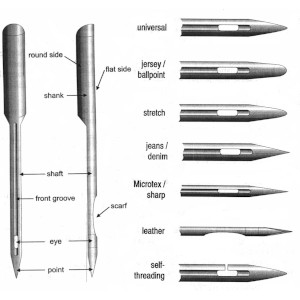The fabric used in manufacturing or knitting a towel is terry cloth. They have a high capacity to absorb water. The fashion industry is incorporating the terry fabric due to its soft and luxurious fiber content.
 Babies to adults, everyone finds products from this material quite comfortable for their delicate nature and water or moisture-retaining capacity. Because of their characteristics, they have a diverse range of uses in products like:
Babies to adults, everyone finds products from this material quite comfortable for their delicate nature and water or moisture-retaining capacity. Because of their characteristics, they have a diverse range of uses in products like:
- Towels
- Bathrobes
- Washcloths for babies
- Handkerchiefs
- Wrist bands for gym wear
- Headbands for both men and women
- Reusable diapers and nappies
- Stuffed toys
Varieties Of Terry Fabric
Two types of materials are available for terry cloths:
- Towel-based: They are generally 100% cotton and have longer loops on both sides that absorb water faster.
- French-based: They contain cotton along with some other fibers as well, like Elastane. Some also consist of bamboo fibers. The sides of the fabric are not the same. One side of French terry is flat, and the other one has crossed loops.
Supplies Needed For Sewing A Terry Cloth

- Terry fabric- one for final sewing and an extra for trial
- Sewing machine
- Needle
- Securing pins
- The thread of similar color as the fabric
- Marker or chalk
Sewing the edges of a terry cloth needs attention. As the fabric contains long loops on both sides, the edges need to be secured first so that they do not start opening up. The procedure of how to sew terry cloth is as follows:
- Step 1: Get your machine ready with the settings if pre-installed
- Step 2: Attach the needle. You may use a universal needle for towel-based fabric and ballpoint needle for French terry.
- Step 3: Fold the edge of the fabric, measuring less than an inch.
- Step 4: Give it another turn of the same width, so that the first fold stays inside the second one.
- Step 5: Secure it up with pins so that it’s more comfortable while sewing. Attach the nails in 90 degrees.
- Step 6: Start sewing along the fold area while holding the top portion.
- Step 7: Use a zigzag stitching method as it will hold the fabric in place
- Step 8: Secure the corners of the terry with backstitch so that the threads do not get loose.
- Step 9: After completion of the hem along the edges, trim up if any extra fabric or thread is hanging.
- Step 10: Similarly, hem the other sides as well.
Importance Of Sewing The Edges Of The Fabric:
The finishing look of any outfit or sewing material comes with hemming the edges. It is the process where the extreme corners of the fabric are folded multiple times and stitched upon the folds. This technique prevents corner fibers from opening up. Attractive embroidery can also be done at the corners to enhance the plain look.
Heavy fabrics need shorter folds and hem. Similarly, lighter materials need thicker hem along its edges. Next time after you finish sewing, remember to hem up the sides to complete the look and prevent this from damaging.
Tips To Consider Before Stitching A Terry Cloth
Before starting to learn how to sew terry cloth edge, understand the following mentioned tips.
Pre-wash
Although terry cloths are of 100% cotton, it is advisable to wash them once in lukewarm water. Dry it up in medium heat. Wash the fabric before beginning to stitch. It will make sure that the fabric won’t shrink later on. If not given a wash properly, there may be no uniformity in the garment, which will damage the look.
Hanging Threads
Make sure that any strands of the loop if the hanging. You may use a vacuum to flatten any loose fibers around the edges.
 Needle
Needle
Due to the hardy and dense nature of the fabric, choose the needle wisely. Skilled tailors recommend using a needle of size 90/14 or 80/12. You may also use a universal needle as well as a walking foot. The thickness of the fabric can pierce through the needle giving it a strong stitch.
Direction
Before stitching, check the course of the nap. Also, keep an eye that every piece of the fabric is uniform and invariable. To examine the direction, you may rub your hand over the material. The correct position is as per the way of smoothness.
Do not miss to elongate or lengthen the stitch on the machine while sewing. You may try a length of 3.5 on a trial fabric and check if it feeds properly through the sewing machine.
Edges
Hemming of the sides is one of the essential tips to remember. As the terry fabric frays off quickly because of the loops on them, securing the edges is necessary. You may also use a serger for this stitching with a sewing machine that will also support the sides. Use both a straight as well as a zigzag stitch one over the other for extra security.
Aberrations
As per discussion, terry fabrics consist of loops of fabric. Some have loops on one side, and others have on both sides. Thus, these loops can easily tangle up with threads while sewing. If any error occurs, use a sharp cutter or seam ripper to remove the tangles. Prevent cutting up the loops. Likewise, while sewing pays full attention to avoid any mistakes.
How To Sew Terry Cloth Edge: Final Thoughts
Although experienced workers have broader knowledge while dealing with terry fabrics, beginners can follow the checklist before starting to sew. To get hold of sewing techniques, attempt stitching on scraps of the same material to avoid mistakes. Implement the tips mentioned above for a fruitful exposure in the field of sewing.
Have patience and try several times until you get it exact. Read the instructions on the manual provided with the sewing machine and adjust the settings as per requirement. Stitching on terry cloth may look rough, but you can prepare your garments or towels or fix up an old worn-out one with experience.


